
Welcome to the International Class Association website for the RS Aero. Here you will find all there is to know about the RS Aero including the latest news, how to register your boat, and links to relevant documents.
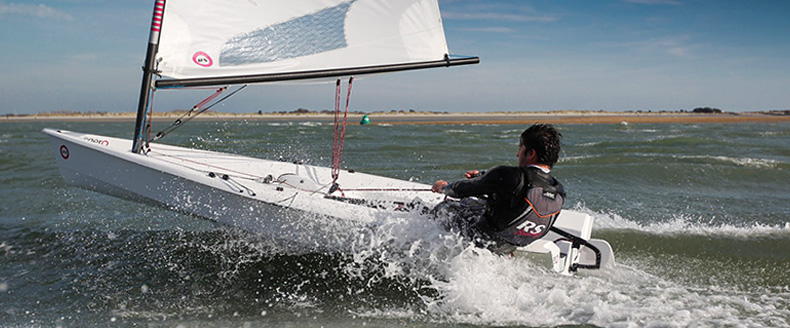
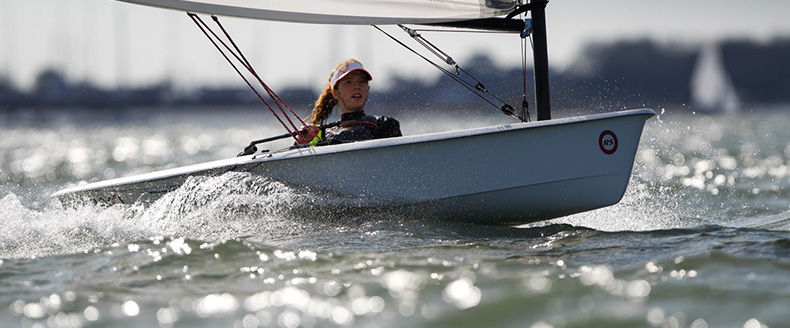
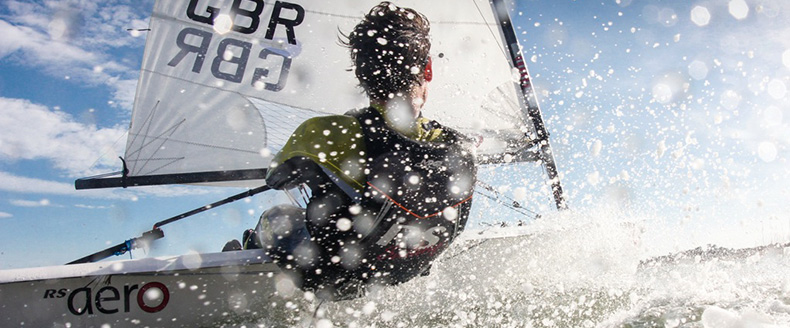
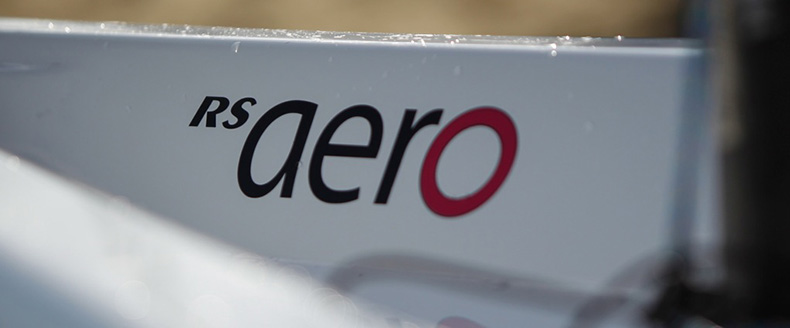
| Home >> Top Tips >> TopTip2020 #48 - Stay Safer Sailing - by Peter Barton, GBR |
This setup seems to work well for attaching a paddle to the deck. It's held with two elastic shock cord lengths with suckers, one near the top, the other across the blade.
These are the suckers used, https://www.amazon.co.uk/IKAAR-Suction-Sunshade-Plastic-Sucker/dp/B08HMJZHLJ/
I also take other bits of string or cord to centre the tiller if I needed to paddle back.
Reply
These are the suckers used, https://www.amazon.co.uk/IKAAR-Suction-Sunshade-Plastic-Sucker/dp/B08HMJZHLJ/
I also take other bits of string or cord to centre the tiller if I needed to paddle back.
Reply
12/12/2021 09:30:00
Klaus Harris
Posts: 7
RETURN TO BOATING - SAFER DINGHY SAILING
Check Yourself, Check Your Kit, Check the Conditions.
Delighted that the Royal Yachting Association were keen to make TopTip2020 #48 into a movie! Smashed it out in a couple of takes on a sunny evening. Thanks to Katie for the filming!
Control the risks, stay safer and have fun!
*turn up tide, not down tide!
Reply
05/06/2020 21:23:00
Peter Barton
Posts: 4664
Hi mkm1879,
On UK lakes sailors would likely just rock their way home because it would never normally be too far.
However I expect for a long distance, like on larger inland lakes where getting becalmed inland may be be more common, a paddle (or praddle) would be a little better than rocking. Rocking might not be possible if you had gear failure.
Ken Fowler (Yodare) did some rocking and paddling when becalmed on his long open water crossings during his RS Aero adventure from Land's End to the north coast of Scotland and subsequent Island Challenge. He used an extendable paddle and a praddle could also be a good single handed alternative. This can be lashed to the back of the cockpit or the deck, maybe with elastic. I have never carried one though as I have never been that exposed.
You do also have the spars to paddle with if required (top section ideally), but a paddle would save that awkward de-rig and using spars is not so good if you then need to rig up again after the wind arrives like Ken would have had to.
Reply
On UK lakes sailors would likely just rock their way home because it would never normally be too far.
However I expect for a long distance, like on larger inland lakes where getting becalmed inland may be be more common, a paddle (or praddle) would be a little better than rocking. Rocking might not be possible if you had gear failure.
Ken Fowler (Yodare) did some rocking and paddling when becalmed on his long open water crossings during his RS Aero adventure from Land's End to the north coast of Scotland and subsequent Island Challenge. He used an extendable paddle and a praddle could also be a good single handed alternative. This can be lashed to the back of the cockpit or the deck, maybe with elastic. I have never carried one though as I have never been that exposed.
You do also have the spars to paddle with if required (top section ideally), but a paddle would save that awkward de-rig and using spars is not so good if you then need to rig up again after the wind arrives like Ken would have had to.
Reply
18/05/2020 17:22:00
Peter Barton
Posts: 4664
18/05/2020 16:52:00
Mark Ripley
Posts: 5
On the lake where I routinely sail alone, one of my big concerns is becoming totally becalmed. I noticed the advice to "take a paddle" but have yet to figure out a way to make that work. I've seen small collapsable paddles for sale but even then have a hard time picturing it securely stowed on my boat. And suggestions, or pictures of doing that would be welcome.
I do have fishermen for "company" on the lake and they would rescue me in a disaster, but...
Thanks.
Reply
18/05/2020 16:19:00
mkm1879
Posts: 4
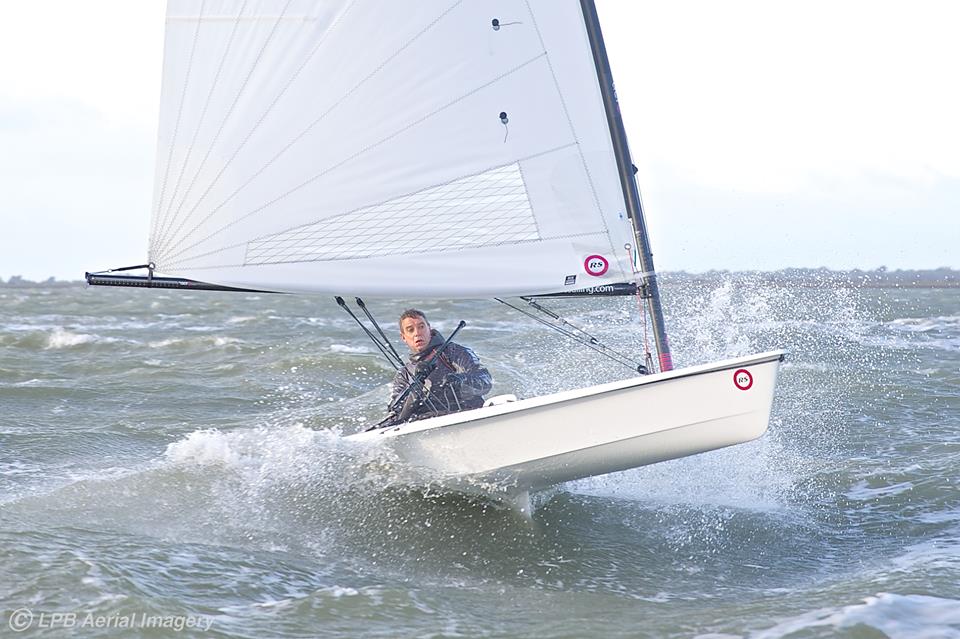 TopTip2020 #48
TopTip2020 #48 Stay Safer Sailing
by Peter Barton, GBR
RS Aero Class manager, Peter Barton takes a close look at safety considerations whilst support resources are limited during the global pandemic;
The restrictions on sailing are now being relaxed at many of the World's sailing locations. However, whilst club resources continue to be locked down with Covid-19 restrictions a 'new normal' period of free sailing only, without organisation and racing events, is emerging.
Sailors who are used to support facilities and are now tempted to launch without them need to consider contingencies. There may also be sailors new to RS Aeros, who have switched to a single hander now they they are unable to 'social distance' in their double handers. However, we do need to be mindful that in our enthusiasm to get back afloat with limited safety resource we do not then put ourselves in more risk than that posed by Covid-19!
Here are some guidance notes to consider how we might stay safer when sailing our RS Aeros without rescue cover, as a single handed dinghy alone or in small groups. In the current climate these should also be read alongside any Covid-19 guidelines and regulations in place at your locality.
There are three main risks to consider and the more we can do to minimise these and try to avoid those occurrences the better;
1) Ability to return to your Start Point
2) Avoiding risk of Head Injury
3) Avoiding risk of Entrapment
1) Ability to return to your Start Point
Plan;
- Sail with a buddy(s), ideally one capable of towing you home. Agree on a plan & communications. Stay together.
- Sail in the middle of the day if possible so that there is more day light remaining.
- Tell somebody you are going out, where you are going and when you hope to return. Have them monitor the conditions and set to raise the alarm if necessary.
- Check out & check in procedure.
- Consider the direction of the wind and current so that you might be able to get back after a breakage.
- Check the forecast and real time data too. The late spring can produce very changeable weather, as any time can. Stay well within your ability and physical limits. With limited safety support we should also limit the conditions we set sail in too.
- Heading upwind of your starting point enables the possibility of drifting home when there is no tide.
- The tide, and how it is changing, can have an effect on that though. For example, at Lymington when the tide is running a capsized boat can drift with the tide against the wind direction. It can take as little as 90 minutes to drift upwind from the river mouth to exit the solent at Hurst, this was put to the test one January afternoon a few years ago. So turn up tide at the river mouth and beware of a tide change during sailing. That way at least you will first drift past the busier river mouth and it will take longer to exit.
- On a small lake drifting onto the far shore might not be a large issue, however, you should consider not going out onto open water in an offshore breeze. E.g. from Lymington in a northerly unless you have other provision in place to return, like a buddy with enough skill to tow upwind or adequate safety cover.
- Carry a tow line. A spare RS Aero mainsheet is perfect. Otherwise you could use the mainsheet of an RS Aero being towed, from the mast of the towed boat to he toe strap of the tow boat.
- Take a paddle (could be an extendable one or a single handed 'praddle').
- Comms: Carry a whistle (easy in the front of your BA/PFD), phone (good waterproof cases are common place now), VHF if you have one. Have the phone easily accessible and the numbers of key people you might need to call ready on speed dial so you can rapidly call if needed.
- Visibility: Wear a bright top (red, orange, yellow, bright blue) as they are more easily spotted if you are parted from your craft or drifting on a turtled hull. There is too much dull black, white and grey sailing kit out there.
- Consider the need for a smoke flare or EPIRB [I used to carry one on my Moth when sailing alone in the winter].
- Check it over to ensure everything is working well and that nothing is about to break.
- Carry a 1m length of 3mm dyneema, you could fix a load of issues with it!
- Carry a multi tool.
- Check the knots on the traveller ends, main halyard bobble, mainsheet ends.
- Check the clevis pin on the mainsheet block (this was the only thing to let Ken Fowler down when he sailed his RS Aero all the way from Lands End to the north coast of Scotland!).
- Check for any toe strap wear and replace at the first sign (they are relatively inexpensive).
- Rope wear, where they are cleated (main halyard, kicker....).
- Tape the tiller extension fitting on around the tiller (they can pop off).
- Check the tiller extension UJ (they break eventually but you can see them deteriorating first).
- Remember to tie/clip the dagger board to the boat.
The only main potential show stopper for an RS Aero is breaking the tiller, but it will only break after misuse;
- Train yourself to hold the mainsheet and drop the tiller extension if you fall overboard.
- Try to avoid any standing up that risks you falling onto it.
- Do not use the tiller to assist rear entry, when climbing in at the transom.
- If dropping the rudder by pulling its downhaul then be sure to pull in line with the tiller, not up or down.
- Be confident of your ability to self recover a capsized RS Aero.
- Righting Lines can provide an easier hold than the gunwhales and are closer to reach for those with shorter arms.
- A capsized RS Aero will turtle allowing a swimmer to regain the boat, however sailors should learn to keep hold of their mainsheet or gunwhale if they fall out.
- Helmet: The RS Aero boom is relatively safe by design by being high, carbon and rounded, and without sharp fittings or edges. However you should consider wearing a helmet, especially on windier days and without support. These are becoming increasingly commonplace. Sailors more at risk of a bump from the boom may be tall, less agile, new to the RS Aero or learning. Also the young, the old or those with previous concussion may be are more at risk of sustaining concussion.
- Rigid Cap Insert: If you don't want a full helmet there is a reduced option popular with our North American RS Aero sailors which is a rigid cap insert that can fit discretely inside a cap, sun hat or fleece/woolly hat. They can be bought cheaply on Amazon and I have one on order. Link below.
- Stay Alert: Inadvertent crash gybes are a big danger. Be aware when you are gybing and control the gybes by throwing the boom over with the mainsheet avoiding that moment of uncertainty. Be sure to duck as the boom comes across.
There is relatively little risk of entrapment in the simple RS Aero. It does not invert too quickly, with its lightweight sealed mast. Two things are worthy of consideration though;
- Mainsheet: Don't have one longer than you need. Keep it tidy. Avoid it tangling around your feet and undo tangles as they happen.
- Toe Strap: Avoid sliding your legs under the toe strap if you are sitting in the cockpit, like down a run.
Head Protection Endorsements
Marc Jacobi, double RS Aero 9 World Champion says;
"I wear a rigid ball cap insert, purchased on Amazon. It came in handy at the Gorge last year when another boat's boom whacked me on the head between races, but I barely felt it! I like the insert because it doesn't appreciably raise the height of one's head, unlike a full-on helmet. Additional benefit: it fits inside my sun hat, so sun protection isn't compromised. Impact protection isn't as good obviously, but I'm OK with what is provided."
Gregory Popp often sails alone on the east coast of Florida, USA, and is a keen advocator of wearing head protection having witnessed some injuries;
"I wear a ball cap light helmet insert in light to moderate winds and a full helmet in strong winds. I got tagged pretty good last Sunday but wasn't hurt as my insert protected me. It is the same as baseball players use, is totally discrete, very inexpensive, and I don't even know it's there. I am a big proponent of head protection as the one injury that can take a lasting toll is a brain injury."
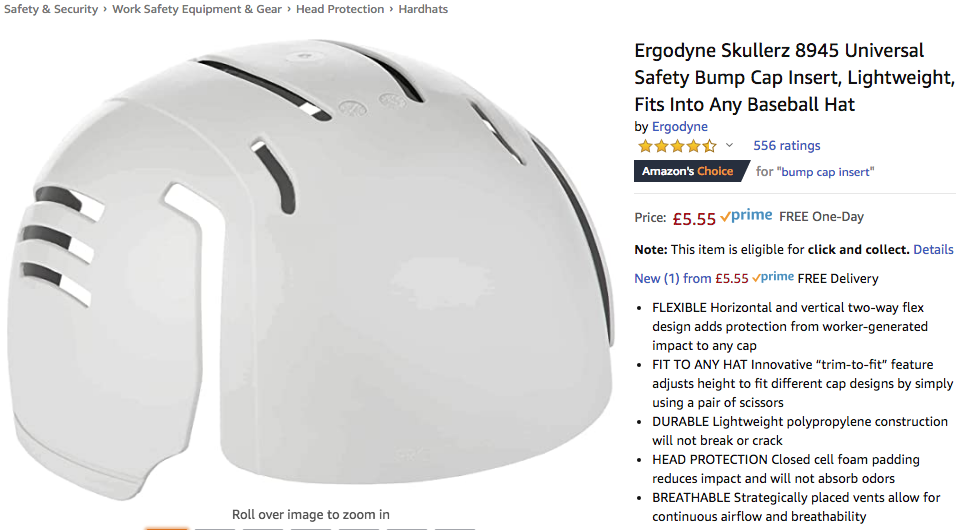
to fit discretely inside a cap, sun hat or fleece/wooly hat.
Compact, easy to use and affordable
can provide an easier hold than the gunwhales and are closer to reach for those with shorter arms.
Modelled here by Karlos at the recent RS Aero Worlds in Australia
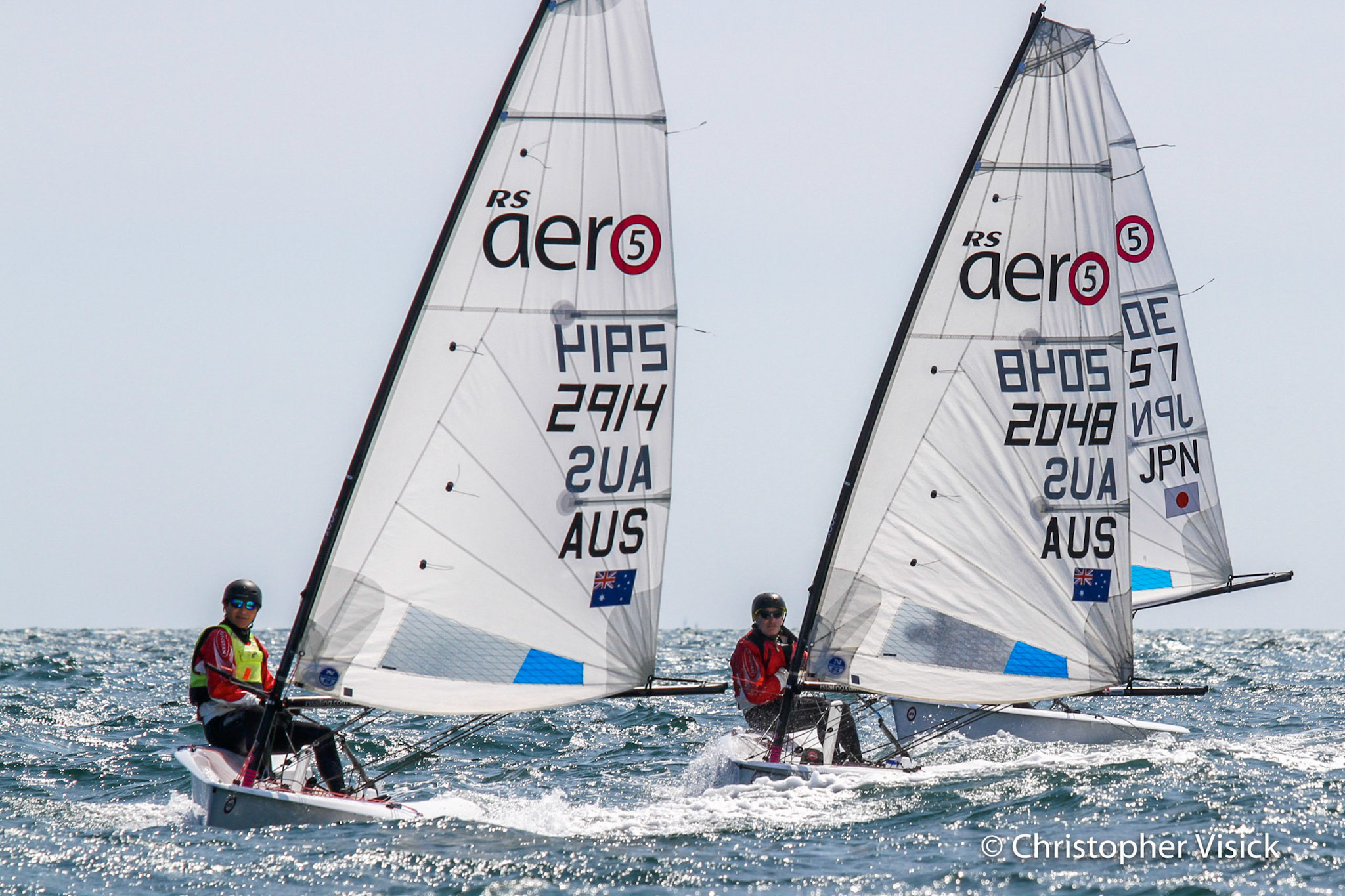 Helmets
Helmets on a breezy day at the recent RS Aero Worlds in Australia, Jan 2020
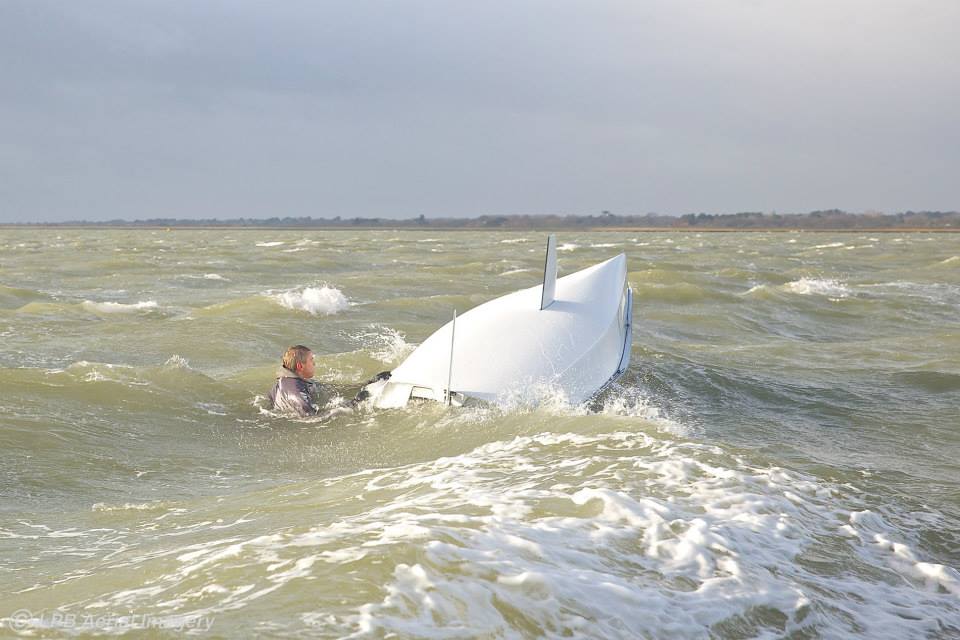 Big Thursday - Lymington, UK, Dec 2014
Big Thursday - Lymington, UK, Dec 2014Good news!
If the RS Aero's carbon mast grounds when turtled in shallow water it is strong enough to support the weight of the lightweight hull in the waves.
I tested it so that you don't have too!
*When sailing with limited support resource we should also limit the conditions we set sail in
Reply
16/05/2020 19:59:00
Peter Barton
Posts: 4664





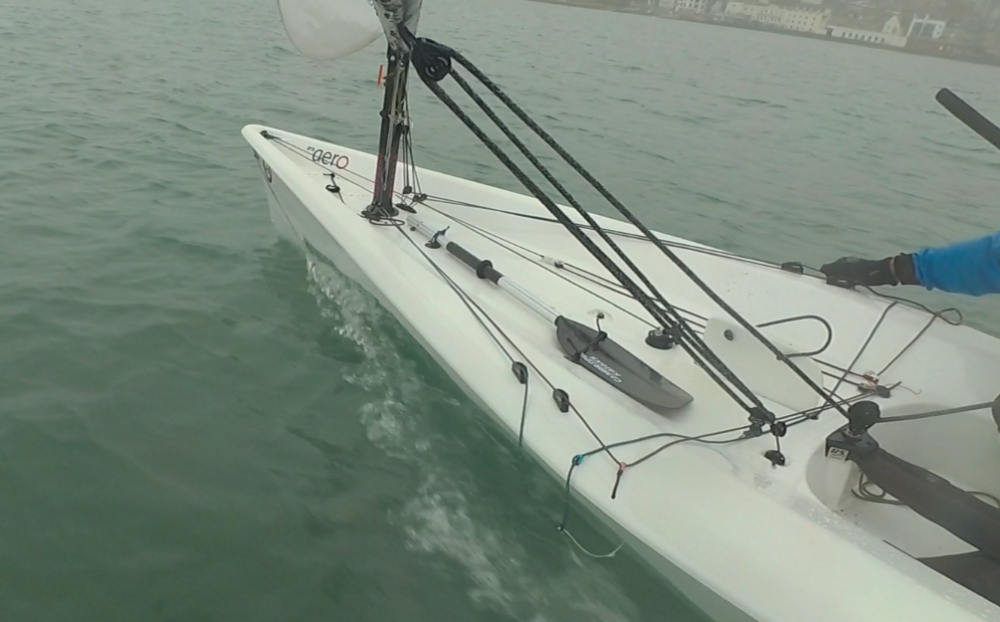

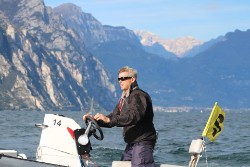
 Orange Smoke Flare
Orange Smoke Flare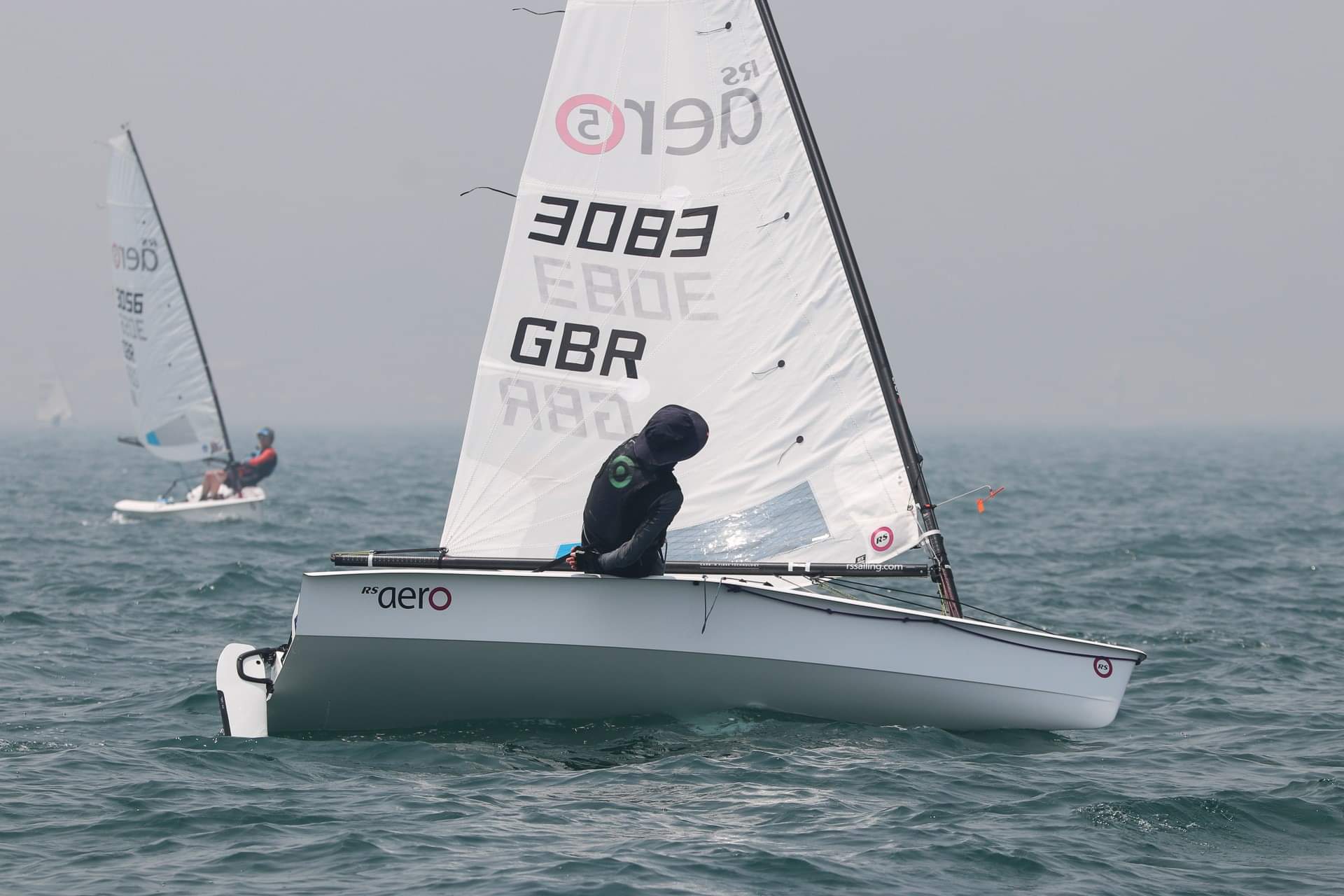 Righting Lines
Righting Lines




